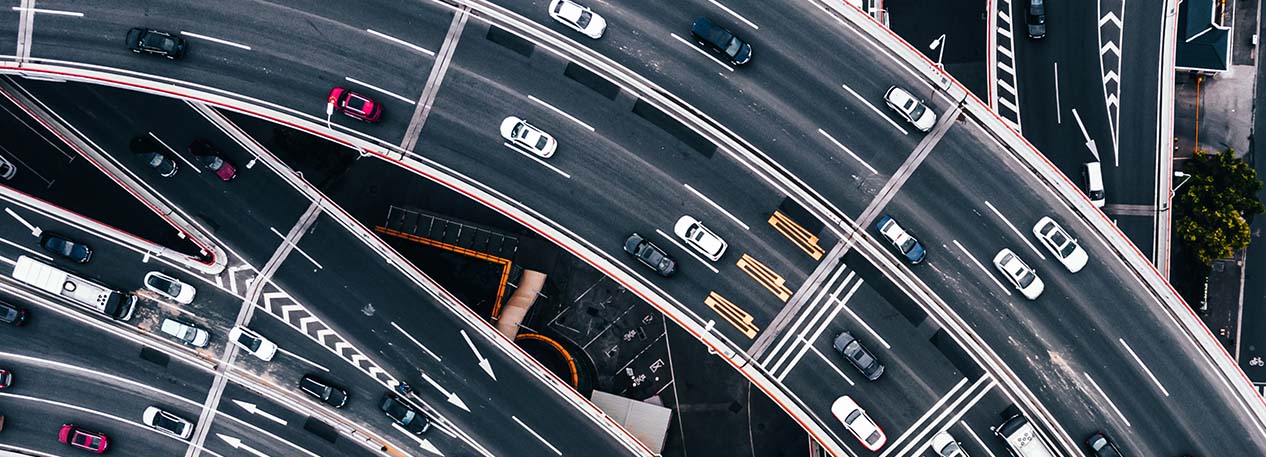The burst of U.S. freeway development that began in the 1950s, while sometimes celebrated as an across-the-board triumph of engineering, construction, and planning, is not always appreciated for its mix of successes and setbacks. Fast-forward to today: On the positive side of the ledger, freeways reduce travel times and provide long stretches of continuous roadway, unencumbered by crossings or intersections. The negative side of the ledger, however, contains a notable reduction in the quality of life, especially for residents of freeway-adjacent neighborhoods. These drawbacks are significant, particularly within central-city communities, and they often outweigh any accessibility benefits that freeways deliver to these areas. Jeffrey Brinkman and Jeffrey Lin, economists at the Philadelphia Fed, explore the nature and magnitude of these negative effects — often referred to by scientists as disamenities — in their paper, “Freeway Revolts! The Quality of Life Effects of Highways.”
In the central part of their investigation, the authors calculate the degree of population loss suffered by urban areas in the wake of freeway development. (This investigation complements existing studies that have tracked the relationship between freeways and other impingements on urban welfare, such as pollution and noise.) Their study has several components, beginning with a panoramic view of the interplay between freeway development and population flows across 64 U.S. metropolitan areas, looking at activity from 1950 (shortly before major freeway projects broke ground) to 2010 (decades into the freeway era). Which neighborhoods experienced population gains during this period? Which neighborhoods saw their population shrink? In short, how were the disamenity effects of freeways distributed between cities and their surrounding suburbs?
To answer these questions, the authors study each metropolitan area at the census-tract level, with each tract sorted according to its distance from the city center. They then home in on city-level dynamics, calibrating their model to resemble a single metropolitan community onto which a freeway is introduced.
In both versions of their model (the nationwide version and the single-city version), Brinkman and Lin show that freeways bring malign effects to urban neighborhoods. “Near city centers,” they report, “the commuting benefits of freeways are small relative to [their] negative quality-of-life effects….” This imbalance, the authors suspect, motivates residents of freeway-adjacent neighborhoods to move away; across thousands of neighborhoods, they repeatedly find that populations “declined in city centers and increased in suburban areas following freeway construction.” This migration makes intuitive sense, the authors say, because “freeways deliver more access benefits to peripheral neighborhoods, so the net local effects of suburban freeways are less negative, or even positive.”
Quality-of-life reductions can take several forms, the authors remind us, including a particularly significant one: the barrier effect, which lengthens travel times between neighborhoods severed by freeways. Using data that retrace trips from 1953 to 1994 within metropolitan Detroit (based on actual travel diaries from the period), they show that not only do travel times become longer for trips bisected by freeways, those trips also become less frequent. “For trips of 2.5 miles or less,” the authors discover, “freeway construction is associated with a 20% decline in the volume of trips….” To be sure, travel volumes increase for trips that cover longer distances, attesting to how freeways can be more efficient than local arteries at reaching communities farther from the city. But the central finding remains: The barrier effect is a major consequence — indeed, it constitutes an outright welfare loss — for people who live near freeways.
The narrative deepens when the authors pursue a research technique known as a counterfactual, in which they adjust their model to diminish the drawbacks imposed by freeways — an exercise they see as analogous to real-world remediation projects such as Boston’s “Big Dig,” in which an existing freeway was removed from the cityscape and routed underground. For this simulation, the economists calibrate their model to resemble the city of Chicago, accounting for characteristics such as population distribution, job locations, and travel times between home and work.
When they diminish the negative effects of freeways in their model, quality-of-life indicators improve and the city's population actually grows. Aided by a compelling visual graphic that depicts changes in population throughout the city, the authors show that population gains are particularly large near freeways that have been removed or buried. Importantly, their finding is consistent with their conclusion that such neighborhoods were quite desirable prior to highway development (especially due to job accessibility) and became less desirable after freeways cut through them. Their model reveals, in other words, that central neighborhoods “already had superior job access, so disamenities outweigh… [the] accessibility benefits [of] new freeways.”
The results documented throughout the study have important implications for urban planners and other stakeholders, particularly when they are contemplating initiatives to mitigate the negative effects of freeways. The authors pinpoint the extent of the population loss borne by neighborhoods divided by highways, thereby providing a new way for planners and policymakers to calculate the costs of highway development. Their research findings spotlight a distinct type of cost — a social, neighborhood-altering cost — that is not always prominent when policymakers weigh the costs and benefits of freeway developments.
In “Freeway Revolts! The Quality of Life Effects of Highways,” Brinkman and Lin document an important duality that transportation planners ought to consider: While broad metropolitan regions may experience net benefits from cheaper transportation and improved access to suburbs, urban communities are likely to suffer some degree of population loss. Their paper suggests that the consensus among professional economists, highway planners, and policymakers — who often regard freeways purely as beneficial additions to the urban landscape — is worth reconsidering. It also provides a new way to learn from the history of U.S. highway development, particularly the heady early years that ushered in a freeway network more adept at transportation between urban centers than at transportation within them.
